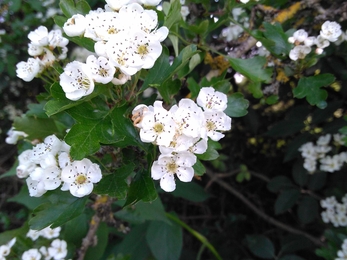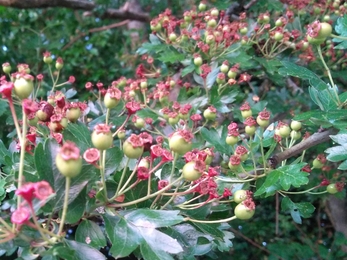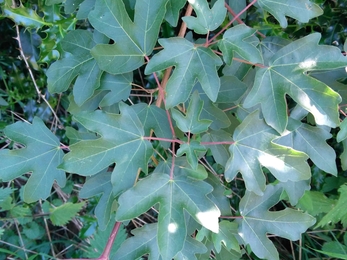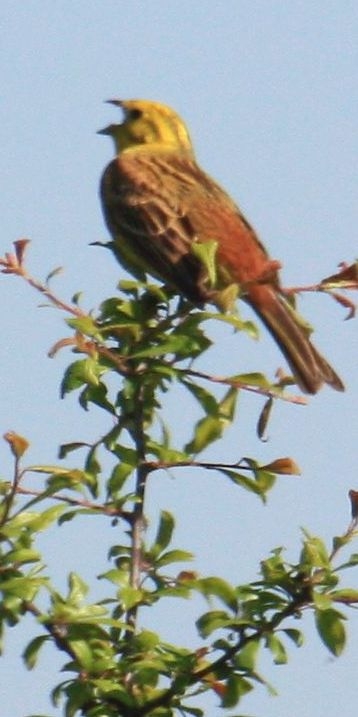Let’s look more closely. Already the rapidly growing shoots brush our legs as we pass. The white Hawthorn blossom clothes the green, as if dressed for a wedding: magnificent this year. The smell lingers in the air, sweet and of almonds – but some people catch an unpleasant ‘under-whiff’. For many cultures, the hawthorn is symbolic - my grandmother would not allow it to be brought into the house as it was considered unlucky!
For farmers, it provides the perfect stock-proof fence. For wildlife, it's ‘something for all seasons’ - the flowers are for insects, thick covering for nesting birds, corridors for small mammals and bats, and in autumn the fruits are for birds. As the flowers fade, we can see the young fruit (haws) developing already.
As we stand still, a robin hops onto the pavement pecking for tit-bits, then back into the hedge, and does the same again. We guess there is a nest. We walk on and a blackbird makes us jump with a whisk of feathers as she flies out; as we pass, glancing quickly and quietly, sure enough, we see her nest, a clump of grasses stuck with mud and mosses. Blue tits and great tits are picking flies from the blossom.






